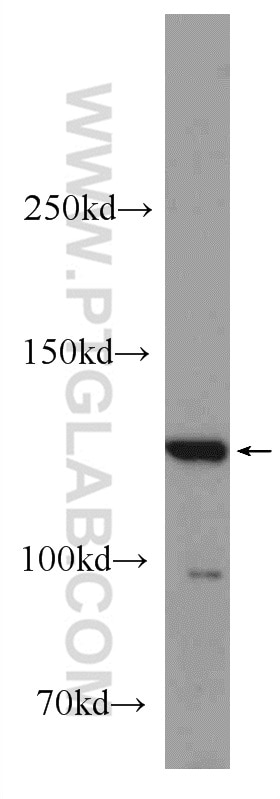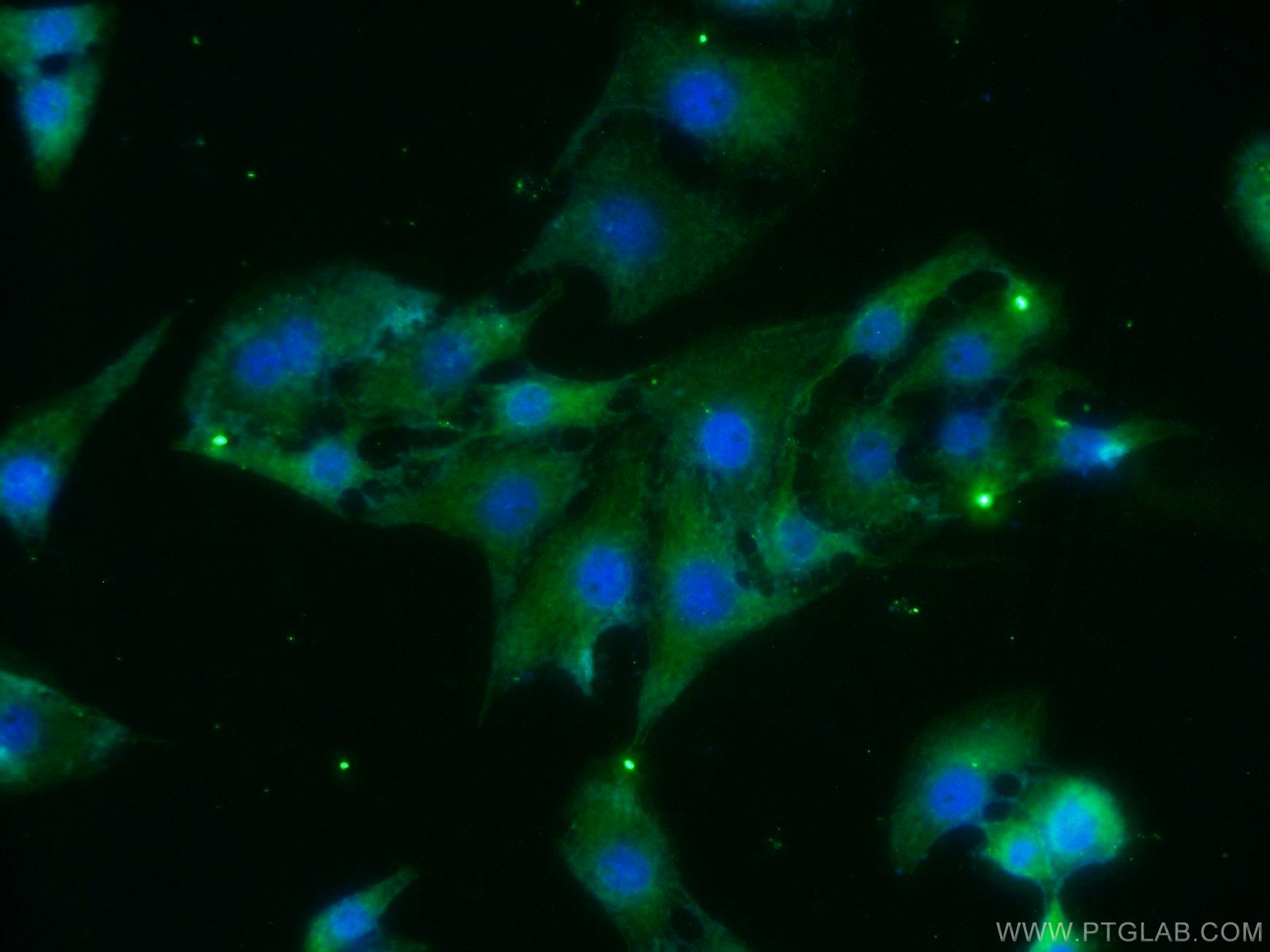BAIAP3 Polyclonal antibody
BAIAP3 Polyclonal Antibody for WB, IF, ELISA
Host / Isotype
Rabbit / IgG
Reactivity
human, mouse, rat
Applications
WB, IF, ELISA
Conjugate
Unconjugated
Cat no : 24836-1-AP
Synonyms
Validation Data Gallery
Tested Applications
| Positive WB detected in | mouse brain tissue |
| Positive IF detected in | SH-SY5Y cells |
Recommended dilution
| Application | Dilution |
|---|---|
| Western Blot (WB) | WB : 1:200-1:1000 |
| Immunofluorescence (IF) | IF : 1:10-1:100 |
| It is recommended that this reagent should be titrated in each testing system to obtain optimal results. | |
| Sample-dependent, Check data in validation data gallery. | |
Published Applications
| WB | See 2 publications below |
Product Information
The immunogen of 24836-1-AP is BAIAP3 Fusion Protein expressed in E. coli.
| Tested Reactivity | human, mouse, rat |
| Cited Reactivity | human |
| Host / Isotype | Rabbit / IgG |
| Class | Polyclonal |
| Type | Antibody |
| Immunogen | BAIAP3 fusion protein Ag21219 |
| Full Name | BAI1-associated protein 3 |
| Calculated Molecular Weight | 1187 aa, 132 kDa |
| Observed Molecular Weight | 130 kDa |
| GenBank Accession Number | BC104966 |
| Gene Symbol | BAIAP3 |
| Gene ID (NCBI) | 8938 |
| RRID | AB_2879751 |
| Conjugate | Unconjugated |
| Form | Liquid |
| Purification Method | Antigen affinity purification |
| Storage Buffer | PBS with 0.02% sodium azide and 50% glycerol pH 7.3. |
| Storage Conditions | Store at -20°C. Stable for one year after shipment. Aliquoting is unnecessary for -20oC storage. 20ul sizes contain 0.1% BSA. |
Protocols
| Product Specific Protocols | |
|---|---|
| WB protocol for BAIAP3 antibody 24836-1-AP | Download protocol |
| IF protocol for BAIAP3 antibody 24836-1-AP | Download protocol |
| Standard Protocols | |
|---|---|
| Click here to view our Standard Protocols |
Publications
| Species | Application | Title |
|---|---|---|
Aging (Albany NY) Integrated analysis of microRNA and mRNA expression profiling identifies BAIAP3 as a novel target of dysregulated hsa-miR-1972 in age-related white matter lesions. | ||
J Affect Disord Label-free proteomics differences in the dorsolateral prefrontal cortex between bipolar disorder patients with and without psychosis. |



